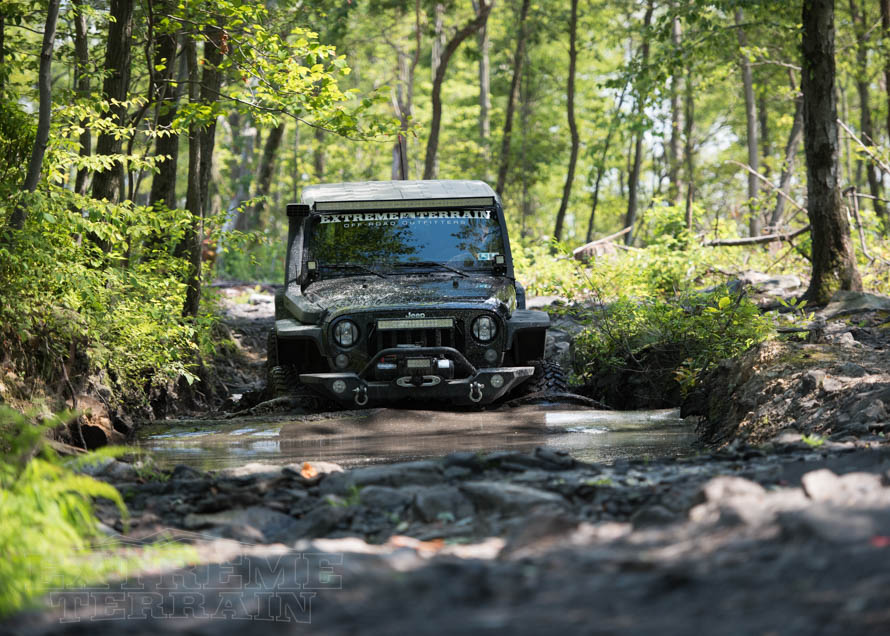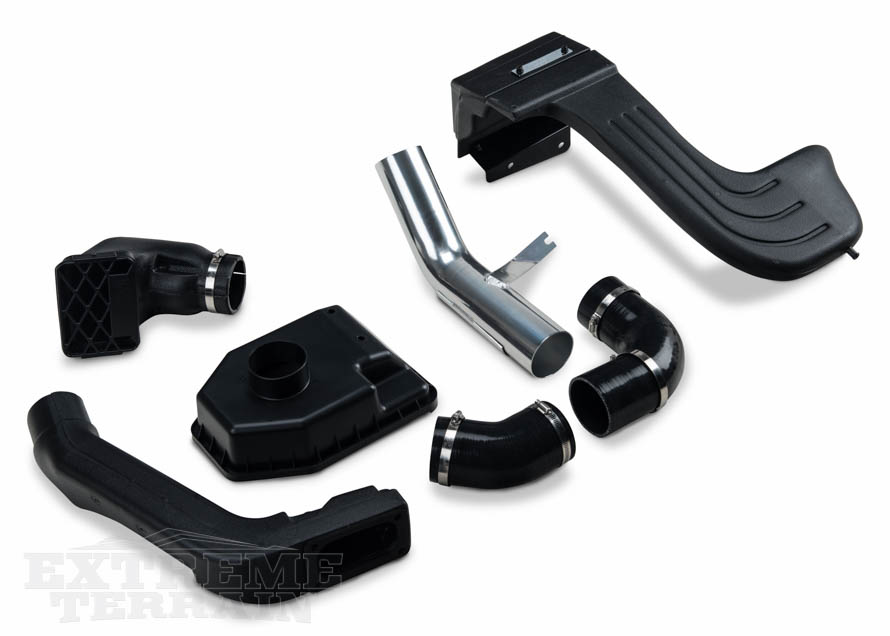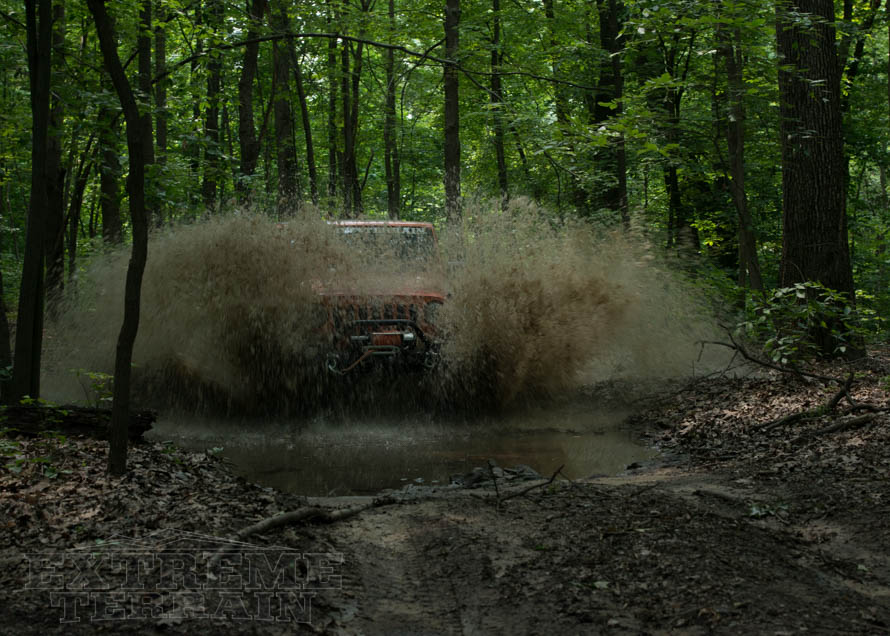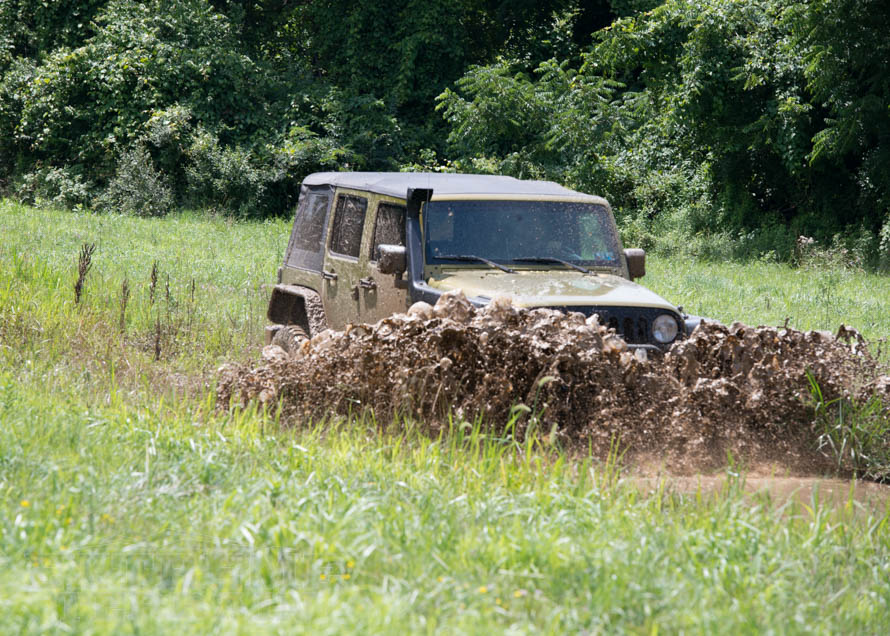Fundamentally, snorkels are predominately all made of hard ABS plastic, that is UV treated, weatherproof and impact resistant. The general light-weight construction, allows the snorkel to typically mount along the side of the Wrangler, by the air-box in a variety of methods. Depending on the year of your Wrangler, this might fall on either the driver or passenger side, depending on the location of the factory air-box.
Low Profile Cowl Design: In some cases, the design is modular and can be adapted to a simple over-hang that hovers above the cowl of the hood. This location, offers a slight height improvement over the factory air-box, while also retaining full visibility and minimal change the look of the Wrangler’s exterior. It also provides a substantial increase in the volume of air entering the engine, over the factory air-box.
High Profile Design: A more traditional snorkel involves a plastic cylinder intake that is typically mounted alongside the jeep’s A-pillar/windshield frame and leads along the side of the hood, often requiring modification to the hood to properly connect with the factory air-box. This design offers the highest and most effective air intake point during deep water crossing and in most cases, allowing your Wrangler to be almost fully submerged, theoretically up until the inlet of the snorkel. Like the low-profile cowl design, an exterior high-profile design also provides a stronger stream of colder/denser air, which in turn provides a slight increase in engine power and throttle response. In addition, a high-profile design is also the most visible option, giving your Jeep a distinctive all-terrain look and function, this can sometimes be visible while driving and slightly obstruct the driver’s view along the front-side of the Wrangler. It’s also important when considering a high-profile design, you should make note of the attachment points, which could interfere with some aftermarket roof racks that typically attach to the same A-pillar windshield frame bolts. Some manufacturers take this possible issue into account and provide optional mounting brackets.
Fender Vent: One of the least obtrusive snorkel design, involves mounting through the fender vent. Typically, these types of snorkels exit the engine bay along the front wheel liner through a series of curved plastic inlets. They are typically mounted on the fender or the cowl of the hood. They offer a minimal increase in height for the air intake, but are among the easiest to install, with the least amount of modification needed to your Wrangler. Like low-profile designs, fender vented snorkels also retain great visibility, with very little disturbance to the general look of the Jeep’s exterior. The can often be easily removed/installed as needed, allowing them to be very versatile, while off/on the trail. It’s important to note that although these designs still offer an improvement in water crossing clearance, they are difficult to fully seal due to several interlocking pieces and offer minimal improvement in airflow when compared to other snorkels, due to the bends needed within the routing along the fender and side of the Jeep.





